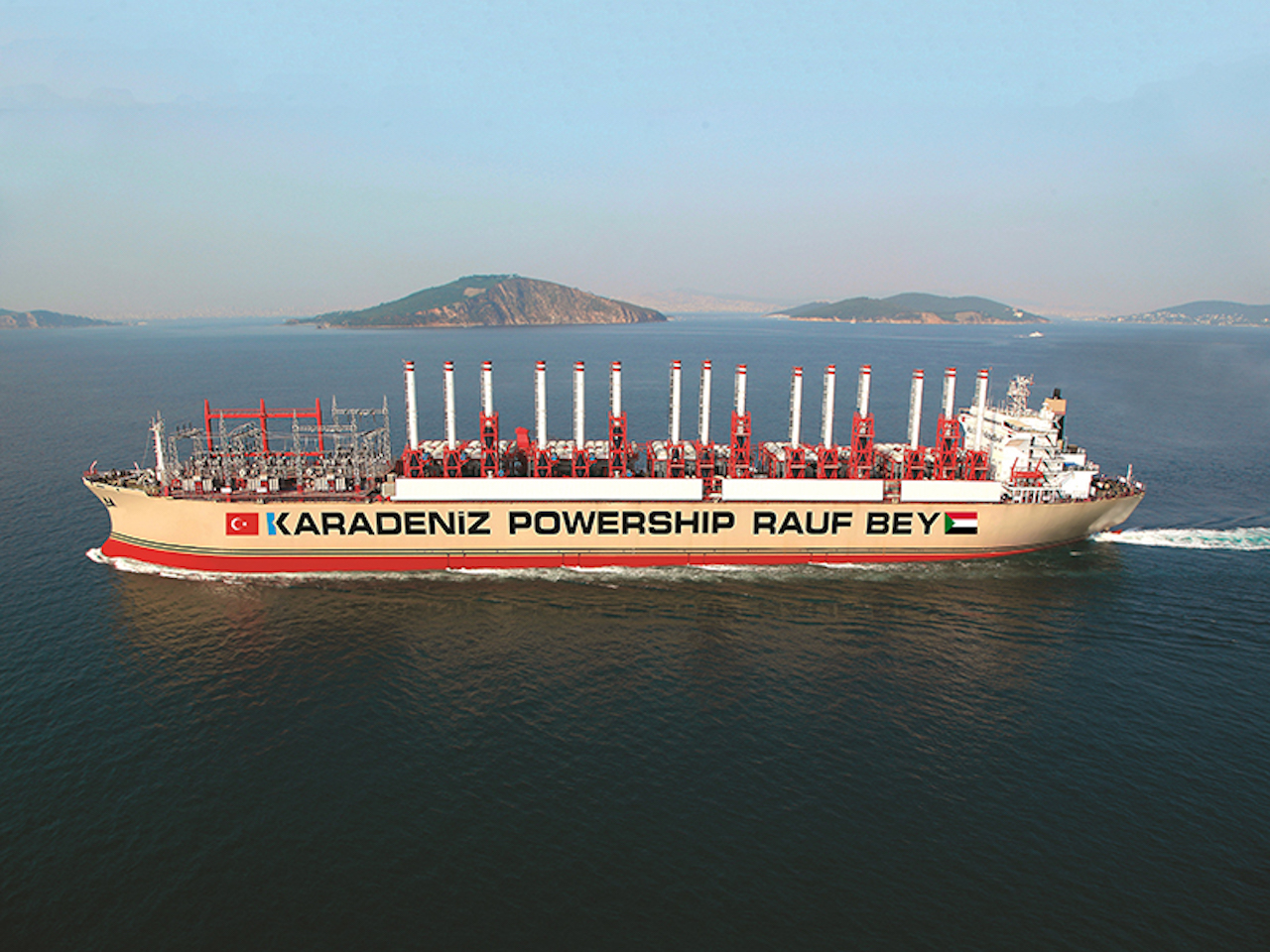Within the next 18 months, the Department of Mineral Resources and Energy (DMRE) plans to bring a silver bullet approach to South Africa’s electricity woes in the form of three gigantic power ships, but they seem as much in the dark about the costs as consumers who are set to foot the bill.
Due to be stationed at Coega, Richards Bay and Saldanha Bay for 20 years, the power ships – from Karpowership – will be pumping 1220 megawatts (MW) of power into Eskom’s embattled grid.
The ships are quick to bring online, will be anchored in harbours and will help minimise the risk of load shedding, DMRE spokesperson Nathi Shabangu said.
However, significant doubts have been raised from a number of NGOs crying foul, from impact assessment flaws to a stark lack of information on issues such as pricing, as well as long-term effects of locking the country into yet another fossil fuel nightmare.
ALSO READ: Mantashe’s new nuclear plan ‘passes the buck’ to future generations, won’t help current crisis
What we do know is that the costs of running these power ships, which use liquefied natural gas (LNG), will fall squarely on the shoulders of tax-paying electricity consumers.
And as NGOs and communities continue to search for answers, many are gearing up to oppose the latest energy developments, with some ready to go to court for answers.
Not diversifying energy mix enough
Environmental NGOs have already cried foul over the ships, saying their use means the renewable energy sector will continue being denied the opportunity to form a significant part of the DMRE’s Risk Mitigation Independent Power Producer Procurement Programme (RMIPPPP).
Bids for 5117MW of power saw LNG nab three of the eight bidders.
But Greenpeace senior political advisor Happy Khambule said the organisation was worried about the penchant for gas over renewables.
“Natural gas is a fossil fuel. The problem is once you start, you get locked in and have to produce more.”
Khambule expressed concern that there were still more questions than answers, and questioned the department’s uncertainty in the long-term within the energy sector.
ALSO READ: Ramaphosa: Renewable power sources are the way to growth
They argue that fossil fuels are not only bad for the planet, but renewable energy is cheaper and fast to come online.
“The biggest mistake is not leveraging the potential for domestic and commercial renewable energy. Big industries are starting to move into self generation. So who is this gas really for, if industries already have their own power?
NGO Just Share’s executive director Tracey Davies, and climate change engagement director Robyn Hugo, said the DMRE’s decision could hold back the entire country.
“We are not diversifying the energy mix, but intensifying fossil fuels. LNG is made of methane, a greenhouse gas which is 86 times more potent than carbon dioxide.”
With power ships potentially lingering on South African shores for 20 years, operating at 72% capacity for 16.5 hours a day, they are bound to produce a significant amount of greenhouse gasses.
groundWork CEO Bobby Peek said the country was buying a technology which would operate for most of the day, not a “peaking technology” to plug the grid’s gaps.
The 20-year power agreement means South Africa would be “locked into a climate-intensive process until the 2040s. It doesn’t make climate or financial sense”.
He has branded the DMRE’s move as “a purposeful delay by the department due to a vested interest in keeping fossil fuels alive”.
Peek said there was an apparent disconnect between the Presidency and ministers, adding what democracy promised was giving all citizens access to electricity. This method, Peek continued, means “a few people are making a lot of money”, to the detriment of poverty-stricken people who would benefit more from having solar panels installed on the roofs of their homes.
“We agreed upon the Integrated Resource Plan [IRP]. Why is it changing?”
‘The wrong application’
Energy expert Chris Yelland said although gas-to-power projects had a role to play in the economy, their duty was not to run continuously, but rather as a low capacity sector.
“16 hours everyday for 20 years is going to be incredibly expensive.”
He said this would mean two decades of rapidly changing international gas prices as well, which is linked to the US dollar-to-rand exchange rate.
However, there is “good money” for middlemen who would benefit the most economically from power ships.
Renewables run at an average of 60c per kilowatt (KW) hour. But gas runs at over R1 per KW hour.
The true cost of power ships has not yet been made public, with the department referring queries to bidding company Karpowership.
“We should be buying as much as we can on wind and solar, with a backup of gas running at low load factors to not incur such high costs.”
Yelland likened power ships to purchasing a printer. One might strike a good deal purchasing the machine, but in the long-term, the real price ramp-up is experienced when buying new ink cartridges.
Peek said power ships will prove to be a “lose-lose” scenario “in many ways”. As such, he said the department’s move has been “opposed on a large scale.”
Questions were sent to Karpowership, but no responses were received by the time of publication.
For more news your way, download The Citizen’s app for iOS and Android.

